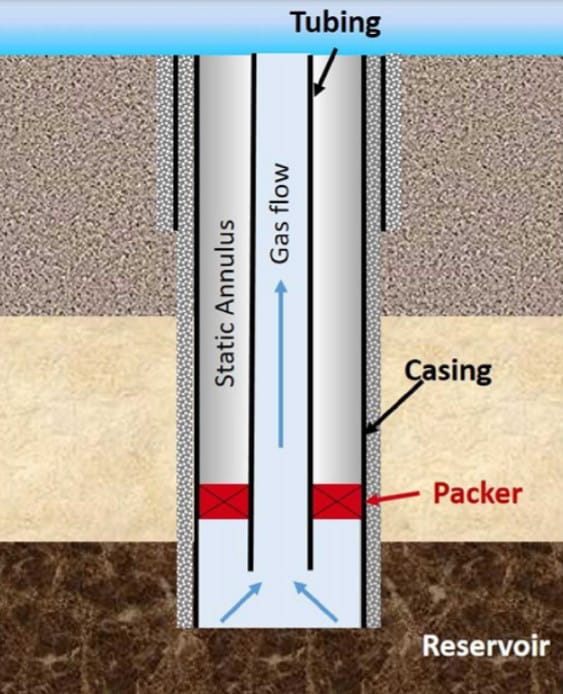Initially following the fire at the Moss Bluff Storage Facility, Duke Energy was not aware of the cause of the natural gas escape from the cavern. However, studies later showed that complications within a brine water disposal pipe led to the eventual ignition of the wellhead.1Natural Gas Intelligence. (2004, October 8). Duke: Unusual events, some with unknown causes, led to Moss Bluff accident. https://www.naturalgasintel.com/duke-unusual-events-some-with-unknown-causes-led-to-moss-bluff-accident
Prior to the gas release and fire, Duke Energy was instituting a “de-brining” process. Brine (a mix of saltwater and freshwater) was being pumped to the surface for temporary storage through a well that accessed the storage caverns. A casing failure at 3,754 ft of depth allowed natural gas to enter the production string and displace the brine.2Natural Gas Intelligence. (2004, October 8). Duke: Unusual events, some with unknown causes, led to Moss Bluff accident. https://www.naturalgasintel.com/duke-unusual-events-some-with-unknown-causes-led-to-moss-bluff-accident

The well string is the conduit by which fluids flow through a pipe to the surface. Typically a production string consists of tubing, which is isolated by layers of casing that are cemented around the string. A packer seals the reservoir fluids from the annulus area, only allowing them to travel upwards via the tubing. In the Moss Bluff incident, brine (rather than the gas shown here) was moving up the well string through the tubing, which at some point failed through separation of the 8⅝” diameter pipe at 3,724 ft in the subsurface.
The natural gas became uncontrolled and an emergency shutdown valve failed. The subsequent fire melted the wellhead, plugging operations were unsuccessful and the decision was made to let the well burn out as already mentioned.3Natural Gas Intelligence. (2004, October 8). Duke: Unusual events, some with unknown causes, led to Moss Bluff accident. https://www.naturalgasintel.com/duke-unusual-events-some-with-unknown-causes-led-to-moss-bluff-accident
Although the reason for the safety valve failure is still unknown, incidents of corrosion to the well string were reported by Duke Energy. This incident serves as a powerful example of the consequences of engineering flaws and inadequate well monitoring and maintenance.
Image Credits
- well string: U.S. Department of Energy